We discovered it by chance, a few years ago, when dining in Torino at Marcello Trentini's Magorabin. We bumped into Giorgio Bacagias, a Greek who had been long in Italy and had transformed the promotion of Greek food delicacies into his reason of being. He pulled out of his bag some elongated and round-shaped "gold bars" with a mother-of-pearl heart, firm and stiff. After cutting one with a knife, he showed the inside, an intense orange. Once sliced, it soon finished in our palate, on top of a slice of toasted bread. A heavenly flavour. It was, and is, avgotaraco.
It's not a real bottarga, though it shares many features with bottarga. It's not even caviar, even though it boasts (and in fact exceeds) its elegance. Avgotaraco is a unique and precious product, «which you must peel like salami, and savour like the best San Daniele», Gualtiero Marchesi said after tasting it. And Ferran Adrià is crazy about it too. Like many great Italian chefs, as we'll see.
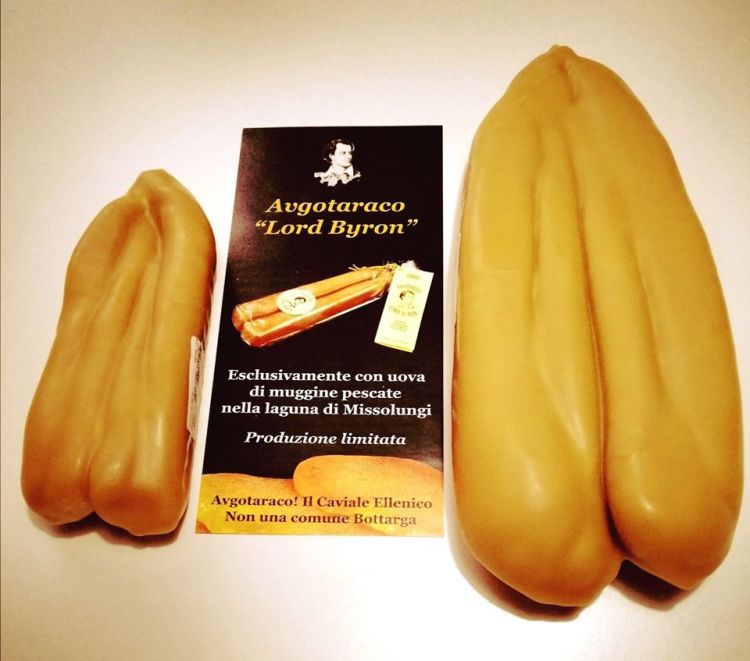
From the outside, it looks like a sort of gold bar: this is because of the "sarcophagus" of natural bees' wax in which it is wrapped: sacks of roe of wild grey sturgeon, carefully removed in a piece, rinsed, covered in salt from the Ionian Sea, and dried for the necessary amount of time with the sea wind of the gulf of Patras. This completely manual technique has continued for thousands of years, some think since the days of the Pharaohs and the Phoenicians (documents date it to the Byzantine times): once the remaining humidity is right, the sacks are dipped into liquid natural bees' wax, the secret of this delicacy. The wax preserves the humidity of the
avgotaraco, which remains soft, and preserves it naturally.
«You should slice it like salami», the Maestro advised: slices of the desired width, freed from their outside wax shell, and of the ovarian sack. The colour changes because each piece is different. From the colour of mandarin to burnt orange, to pumpkin, in many nuances. The flavour is nice and round. The preserving in wax allows to use very little salt to preserve the roe, hence the flavour is both sweet, sapid, and deliciously umami. The texture is fine: it's firm at first, and it soon melts on the tongue, creamy, almost buttery. Velvety. The extraordinary harmony of its aroma is surprising, neither too much iodine nor too much honey, it's both delicate, intense, persistent. An almost magical balance which recalls the place where it's made...
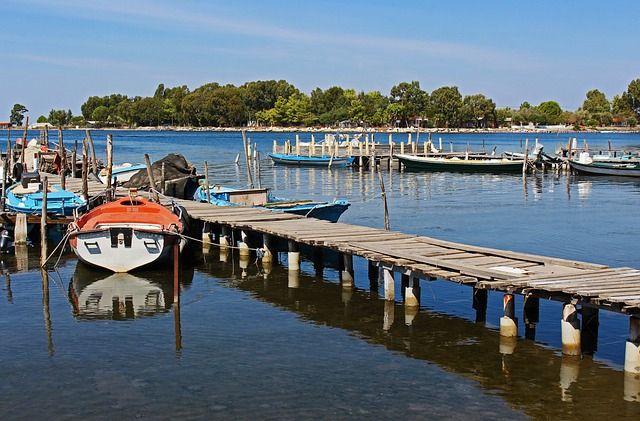
Apekeini: this is the word the people of Patras use for those of Missolonghi, in western Greece, on the Ionian Sea. Apekeini means "those from the other side ": because Patras, in Peloponnesus, faces the much smaller Missolonghi; but between the two there's the thin strip of water that separates the Gulf of Patras from Corinth (this until they built the Rion Antirion bridge in 2004, which allows a direct and fast link between the two banks, without going through Corinth, a journey of 400 km once, 9 days on foot). Even though the distance now is shorter, the apekeini are still witnesses of a millennial food tradition. Almost a past that is part of today's heritage. So much so avgotaraho mesolonghiou is one of the few seafood products to have a European PDO certification.
The lagoon of Iera Poli Mesolongiou, the “sacred city of Missolonghi”, at the entrance of the gulf, is low, clear and rich of fish, with semi-freshwater (which determines the not very salty aroma of avgotaraco); an extraordinary area, and indeed it's a Ramsar Site, which includes wetlands of international interest. It has always had a vocation for fishery; large grey sturgeon is caught with a system of wood fences called ivaria. This is where avgotaraco comes from: people say that it was Lord Byron, who died in Missolonghi on the 19th April 1824, who first made it popular internationally.
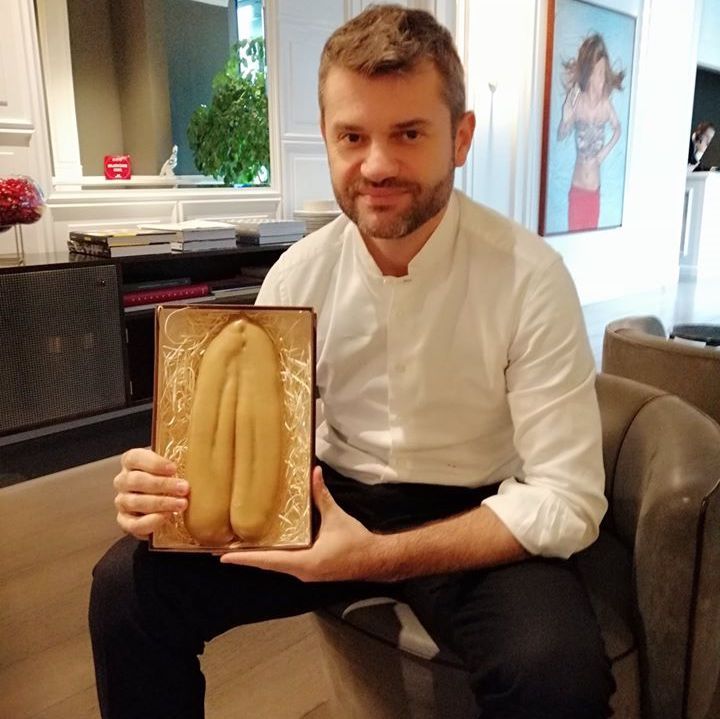
Enrico Bartolini and avgotaraco
Avgotaraco doesn't require anything else to be savoured. It's enough by itself. Tasting it by itself is enough to enhance its features: perhaps on a slice of toasted bread, the heat helps the release of its aromas. You can also add a drop of oil, some pepper and lemon (or not). Or slice it on a salad. For the most daring, on foie gras. And you can also use it as common bottarga, drying it for a few hours in the air and then grating it on pasta.
The of course chefs with their creativity always offer some new points of view. Here are some of the dishes in which it's featured, as protagonist or coprotagonist.
Translated into English by Slawka G. Scarso
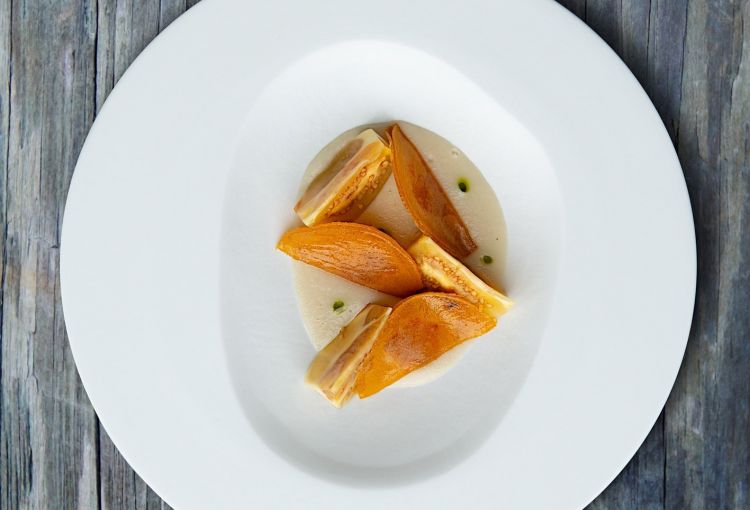
Ravioli with avgotaraco, elm honey, lovage oil, lulo fruit, cream of Jerusalem artichoke from Terry Giacomello, Inkiostro in Parma
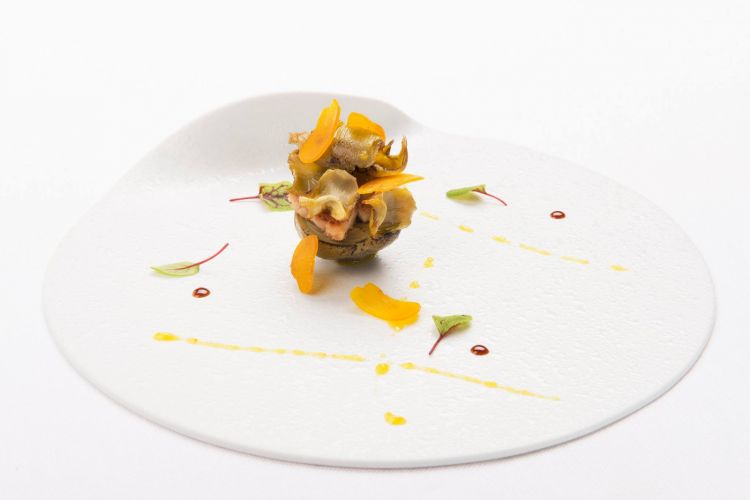
Artichoke and sweetbreads, orange chutney, reduced Cynar and avgotaraco from Claudio Sadler, Sadler in Milan
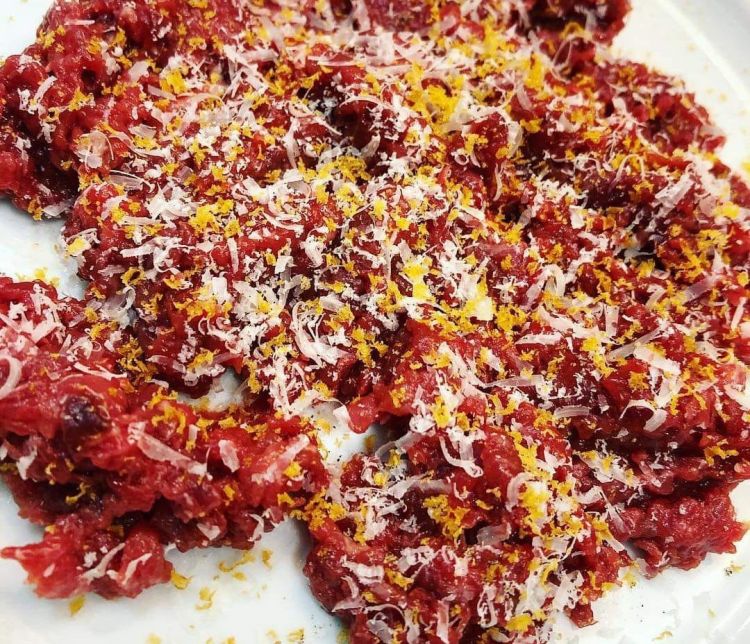
Steak tartare of sheep from Bergamo, pecorino sardo and avgotaraco from Diego Rossi, Trippa in Milan
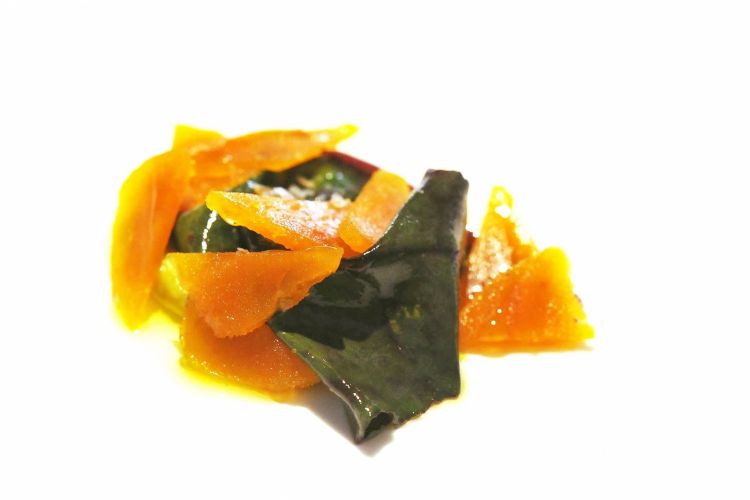
Avgotaraco, pistachio paste, lemon from Marcello Trentini, Magorabin in Torino
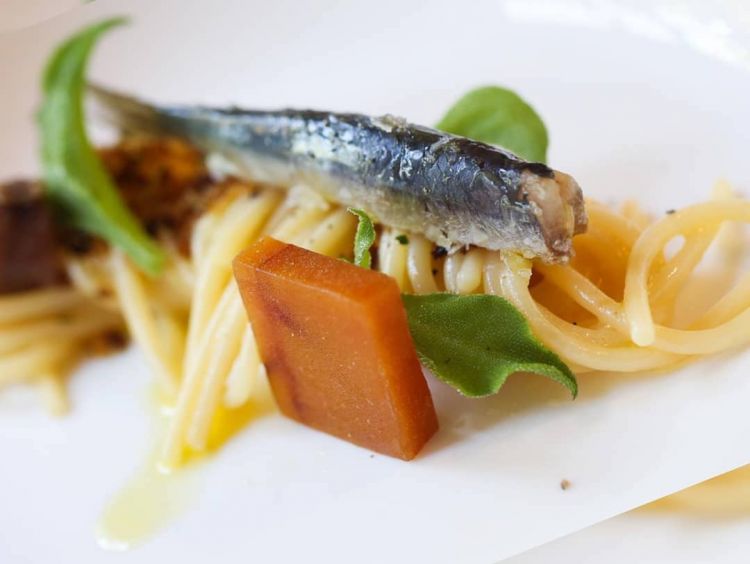
Spaghetti with butter, lemon marmalade from Sorrento, anchovy colatura, marinated anchovies, ficoide salad and avgotaraco from Roberto Conti, Rc Resort in Mortara (Pavia)
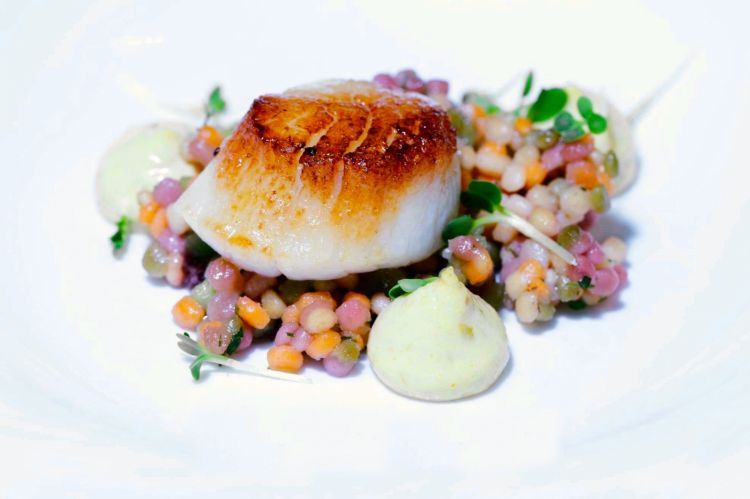
Ancient Greek pasta salad, scallop and avgotaraco from Davide Puleio, soon to open in Rome
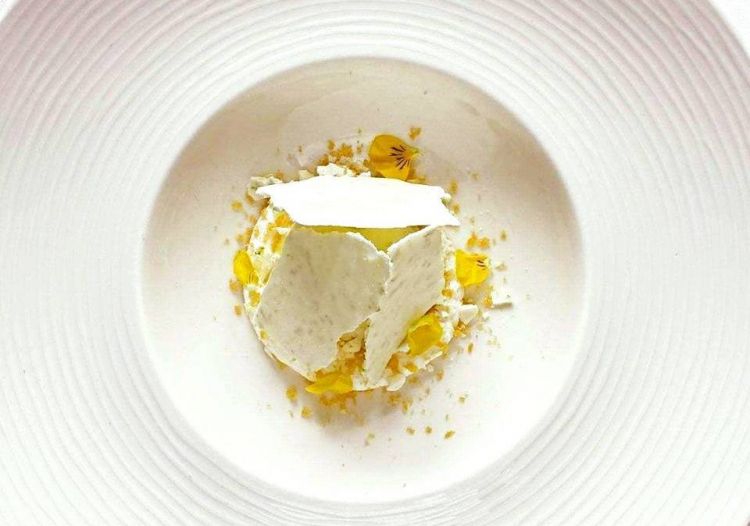
Mousse of robiola, lime, avgotaraco and sorbet of lime and ginger: a dessert from Giacomo Lovato, Enoteca regionale lombarda in Milan
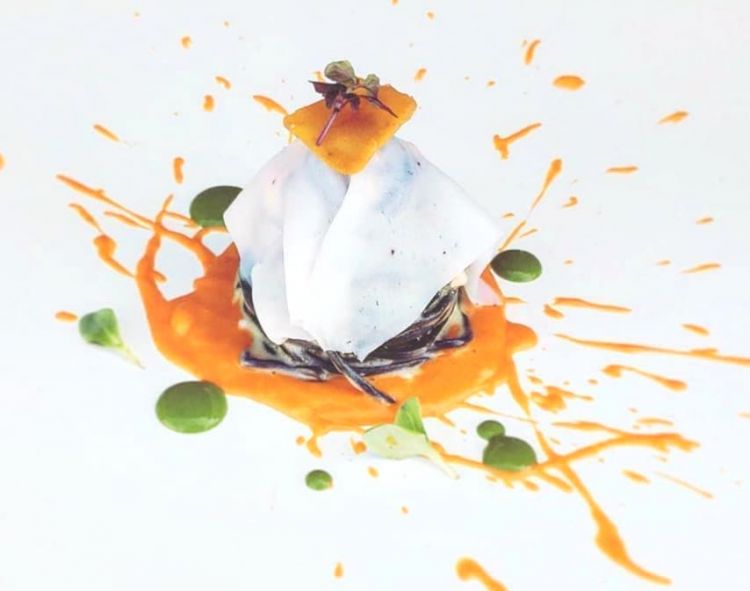
Tagliolini with squid ink and gobetti prawns, Marinda tomato and avgotaraco from Mauro Brina, Il Cappon Magro in Bobbio (Piacenza)
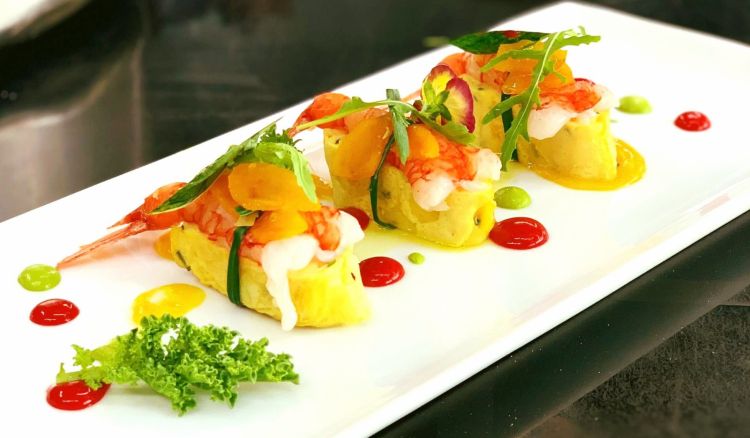
Japanese omelette with red prawns and avgotaraco from Nicola Cavallaro, Un Posto a Milano in Milan
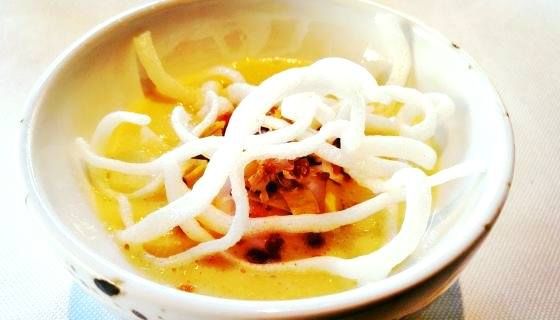
Countryside Ramen: egg, chargrilled artichoke, potatoes cooked in dashi and avgotaraco from Dario Guidi, Antica Osteria Magenes in Gaggiano (Milan)